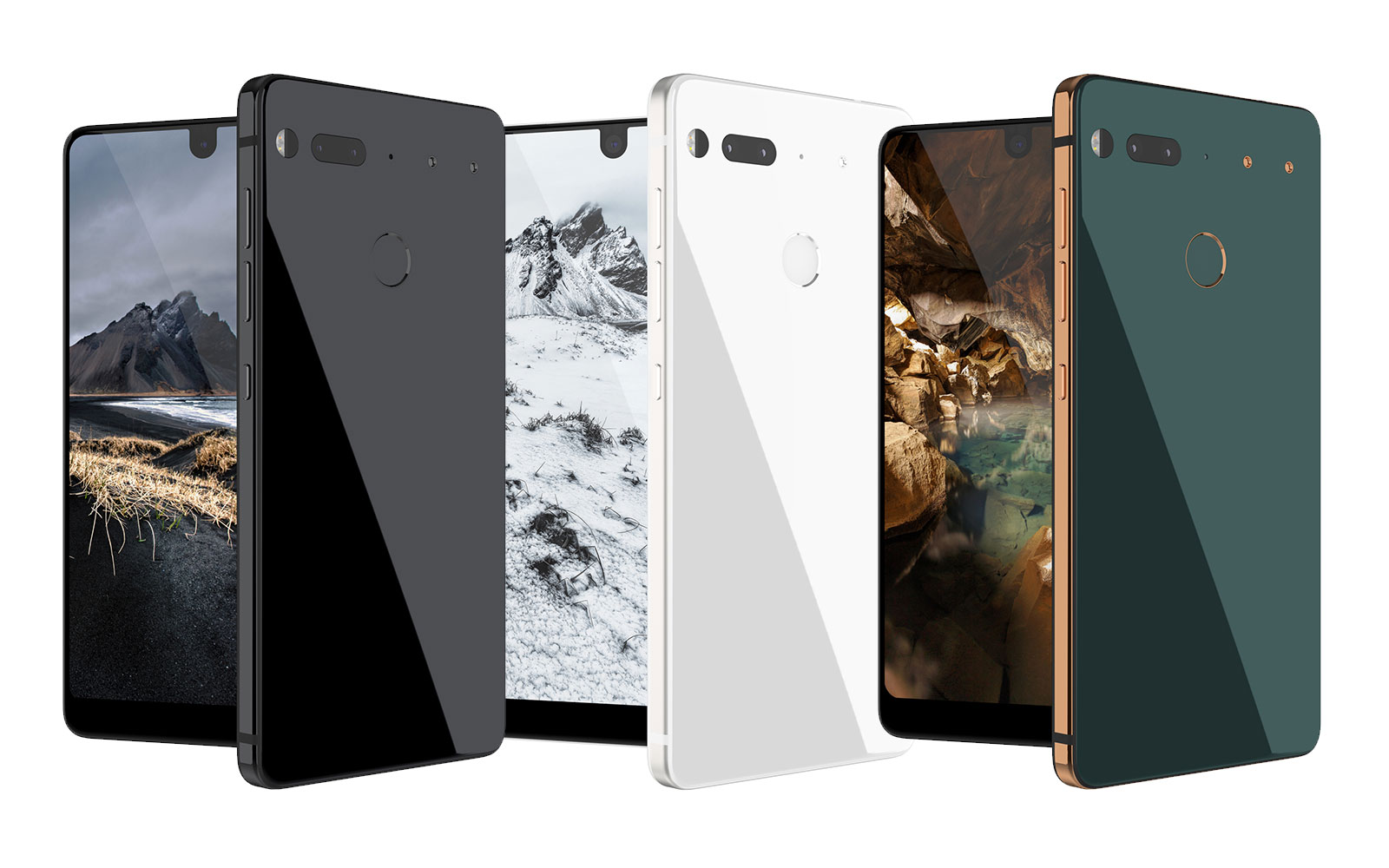 Essential
Essential
When Android co-founder Andy Rubin left Google in November of 2014, shortly after a major executive shake-up within the search giant, his next move wasn't particularly clear. All we knew back then was that he reportedly wanted to start something on his own, which turned out to be building a high-end phone with a company called Essential Products Inc. And after much speculation and multiple teases by Rubin himself, we now know that device is the Essential Phone, an Android handset with a gorgeous design and top-of-the-line specs.
The Essential features a 5.7-inch edge-to-edge display (similar to the one on Samsung's Galaxy S8), the latest Snapdragon 835 processor, 128GB of built-in storage, 4GB RAM and near-vanilla version of Android Nougat. It's basically everything you'd want in an Android handset in 2017. And there's more: The Essential Phone takes a cue from Motorola's modular Moto Z, thanks to two tiny magnetic inputs on its back that let you attach accessories like a 360-degree camera. This all comes together in a body that's made out of titanium and ceramic, materials we don't typically see on smartphones, even high-end ones.

Rubin clearly didn't cut any corners, but his toughest tasks still lie ahead. For one, people who want a flagship smartphone nowadays probably have their mind set on an iPhone 7 or a Galaxy S8. One area where the Essential Phone could succeed is the market companies like Motorola and OnePlus are trying to conquer, made up of well-specced, carrier-free devices that range anywhere between $50 to $450. Problem is, the Essential is aiming for higher grounds, since it'll cost $699, or $749 when bundled with a 360-degree video camera when it ships next month.
That's not to say the Essential Phone isn't worth its price tag, or that it isn't a solid alternative to Apple's or Samsung's flagships, because everything on paper suggests it could be. But if Rubin wants to appeal to consumers beyond gadget fetishists (who may be inclined to buy the Essential based on his reputation) he's going to need help from wireless carriers. According to IDC, Samsung and Apple accounted for 22.8 and 14.9 percent of handset shipments worldwide, respectively, in April of 2017. And what do these two tech giants have in common? They have carrier partnerships all across the globe.
On the Android side alone, a recent Mobile Connectivity survey by research firm NPD claimed 55 percent of users on the platform have a Samsung phone, another telltale sign of the challenge ahead for Essential and any other company that wants a piece of that pie.

Take Google's Pixel, for example. As highly anticipated as the device was, Verizon is the only carrier in the US that offers it to post-paid customers. Sure, you can buy it straight from Google unlocked, but that simply isn't enough to move the needle in its favor in terms of market share. "Right now this phone is priced very, very close to the flagships out there from Apple and Samsung," says Brad Akyuz, NPD's Connected Intelligence industry analyst. "I think that's a big challenge."
Akyuz thinks it'll be difficult for the device to reach a mass audience without support from carriers like AT&T, T-Mobile or Verizon. In particular, he says the Essential Phone could benefit from being offered by carriers on monthly installment plans, the same way they do an iPhone 7 or a Galaxy S8. "Without that," he says, "we're probably looking at a phone, that will do well in a very, very limited niche market."
That said, it also matters how Rubin will view and measure the success of his new product, because it may not be all about the numbers. Along with its new namesake smartphone, Essential also introduced "Home," a smart assistant with a shiny circular design that can be controlled via voice commands. Home is powered by Ambient OS, a new platform that Essential hopes will compete with the likes of Amazon's Alexa and Google's Assistant. (Rubin mentioned that Home will be able to run Siri, Alexa and Assistant at Recode's Code Conference, though it's unclear how that might work.)

Of course, Rubin isn't the first high-profile Google alumnus to leave and go to work for a rival or start a new company. Hugo Barra, former VP of Android, left Google in 2013 to join Chinese phone maker Xiaomi, where he led different hardware efforts before departing to Facebook to be head of Oculus VR. Mike Chan, a longtime Android engineer, worked on the promising Nextbit Robin phone that ultimately ended up being a bit of a disappointment.
Only time will tell if Essential can succeed where others have failed, but Rubin is setting the bar pretty high with a device that's both sleek and powerful. I'm intrigued by the Essential Phone, I'm just not sure I'm ready to leave my iPhone behind -- especially since I'm still paying it off.
Image credits: Essential